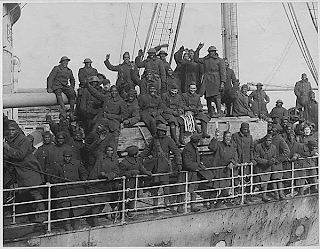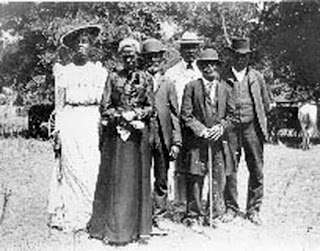Lawrence, KS – Three years after the Spencer Museum of Art premiered its landmark exhibition Aaron Douglas: African American Modernist, a special double-issue of the journal American Studies celebrates Douglas’s legacy, gathering together articles about the Topeka-born artist by some of America’s preeminent scholars.
The issue, "Aaron Douglas and the Harlem Renaissance," contains essays primarily derived from "Aaron Douglas and the Arts of the Harlem Renaissance," a September 2007 interdisciplinary conference held at the University of Kansas in conjunction with the SMA exhibition.
Edited by KU Associate Professor of English William J. Harris, who organized the Douglas conference, the issue features articles by an impressive group of nationally known scholars and artists who spoke at the conference, including Terry Adkins (University of Pennsylvania), Gerald Early, (University of Washington), Farah Jasmine Griffin (Columbia University), Amy Helene Kirschke (University of North Carolina-Wilmington), David Krasner (Emerson College), Robert G. O’Meally (Columbia University), and Richard Powell (Duke University).
To purchase the Douglas edition of American Studies (Volume 49, Number 1/2, $12), please make checks payable to MAASA and send to Managing Editor, American Studies, Jayhawk Blvd., Bailey 213, The University of Kansas, Lawrence, KS 66045-7545.
About Aaron Douglas: African American Modernist
Curated by Susan Earle, SMA Curator of European & American Art, Aaron Douglas: African American Modernist was the first major exhibition to celebrate the life, art and legacy of Douglas, an African American artist from Kansas who went on to become the most important visual artist of the Harlem Renaissance. The Spencer-organized exhibition, some seven years in the making, was the first-ever national traveling retrospective of Douglas’s work, and brought together nearly 100 works from public institutions and private collections across the country. The exhibition debuted at the Spencer in fall 2007, and then traveled to venues in Nashville (Frist Center for the Visual Arts), Washington, D.C. (Smithsonian American Art Museum), and New York (Schomburg Center for Research in Black Culture). The exhibition included an eponymous, multi-author scholarly book, edited by Earle and published by Yale University Press. That publication, as well as the recently published Aaron Douglas and Alta Sawyer Douglas: Love Letters from the Harlem Renaissance, is for sale in the Spencer’s shop, and through the SMA website: www.spencerart.ku.edu
MEDIA CONTACTS Bill Woodard Director of Communications Spencer Museum of Art 785.864.0142 bwoodard@ku.edu






























